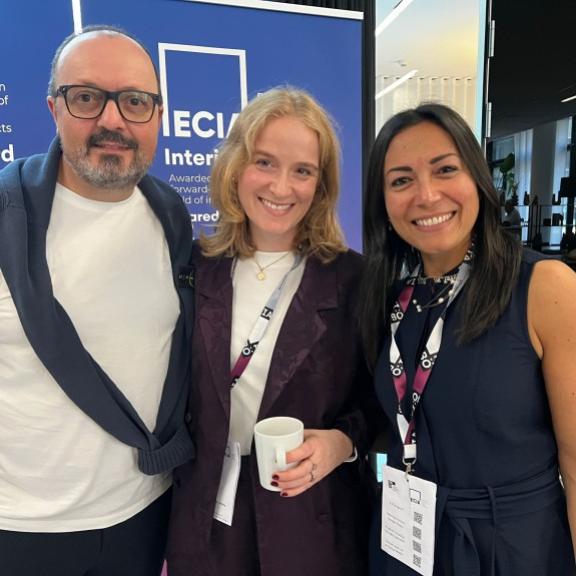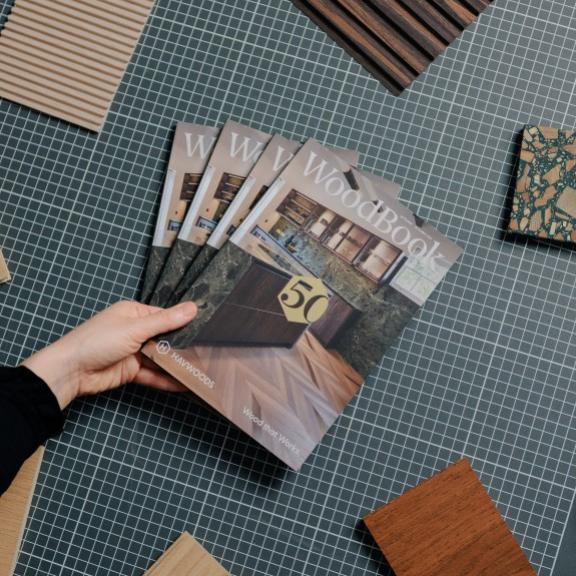Learning With CPD When There's Just No Time
Thought-provoking CPD needn't be a hassle as BIID Member Claire Tull recently discovered

Undertaking CPD doesn't necessarily have to take up hours at a time. Finding myself time-poor, I chose the BIID CPD ‘Wood CO2ts Less’ by Wood for Good Ltd, principally because it was short, online, and I could fit it in my working day. There are lots of interesting and varied ways of gaining structured CPD hours with the BIID and this was a little gem in The BIID CPD Directory.
This 30 minute online module is surprisingly engaging (not a collection of dull statistics) and definitely thought provoking. Each section is packed with facts and figures relating to the construction industry's CO2 emissions, where the industry's emissions come from, and the industry's overall contribution to carbon output. The CPD also discusses how using wood over metals and concrete can help companies reach their sustainability goals and achieve Net-Zero Status.
Importantly, this CPD reminds the designer / specifier that wood is more than just a natural and renewable material; each tree does an amazing job in locking away CO2 with just 1m³ of mature trees locking away some 0.9 tonnes of CO2. The European forest carbon sink continues to grow, sequestering 719 million tonnes of carbon dioxide per annum. The statistics are staggering!
Whether simply adopting a more mindful, environmentally-friendly approach, or forming a formal policy for specifying materials, this CPD provides the data to back up the theory, provides useful, sustainable ways to avoid CO2 intensive materials whilst hitting home the message that ‘wood costs (the planet) less’. A little change to the materials we use and specify today can and will make a massive difference to the CO2 emissions in years to come, so I will certainly be favouring timber floor covering over polished concrete!

Struggling to find the time for CPD?
The BIID CPD directory allows you to filter for online CPDs. These can take from as little as a few minutes to a few hours to take.
Plan ahead! At the start of the CPD year, schedule time in your diary for CPD. It's far easier to spread it out over the year than do it in a rush ahead of the deadline.
Don't forget: The CPD requirement comprises of structured and unstructured hours. You may already have activities in your calendar that count towards unstructured learning, for example attending industry events.

The BIID offers many exciting opportunities to develop professional practice with CPD hours.
Recording your CPD regularly throughout the year alleviates the stress of compiling your annual report in one sitting. To help our members in achieving this, we have set out the following handy hints
- Upon registering for a CPD activity, add it to your diary. TOP TIP: Make a note on whether the activity is structured or unstructured and the length (in minutes and hours) of the activity. Colour coding your diary will help you find important information quickly.
- Set reminders to add your completed CPD training to your tracker, this could be weekly, monthly, or quarterly. Or, add it to your tracker as soon as you complete!
- Check your tracker to see how many hours you have remaining to complete for the year. If you’ve outstanding hours, book more CPDs in to make sure you reach the minimum by the cycle submission date. Remember: CPD can be sourced from external organisations and can be of any length.
- Consider joining up with other interior designers and booking CPDs together, or dedicate time to CPD training for your team
- The annual CPD Requirement for BIID Registered Interior Designers is 10 hours of structured and 10 hours of unstructured learning, and the CPD Cycle date is 1st April to 31st March. Members have until the last Friday of April to submit their CPD Reports.
For more information on the requirement, and exemptions, please visit our Continuing Professional Development and the BIID webpage
To see all the CPDs available on the BIID CPD Providers Directory please click here.
The BIID thanks guest writer Claire Tull.
To Celebrate Black History Month, We Sat Down With D&I Committee Chair Charmaine White
Learn about smart home technology with Awards sponsor Control4
Highlights from the September ECIA General Meeting in Vienna
We asked Verity Coleman: What makes the perfect junior designer?
BIID has welcomed a range of new members and Industry Partners over the last three months
Discover insights into the brand’s milestone 50th year, their latest design innovations, and the company’s long-term commitment to supporting the BIID community.





